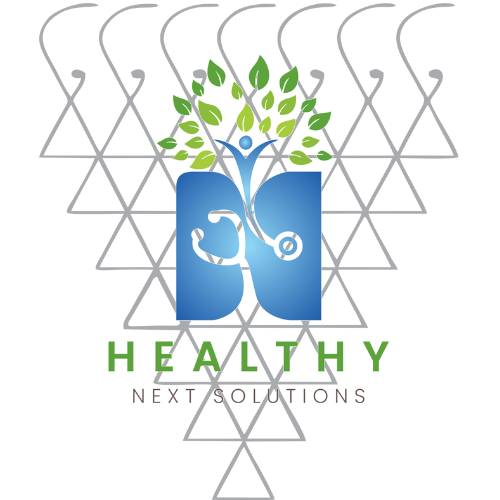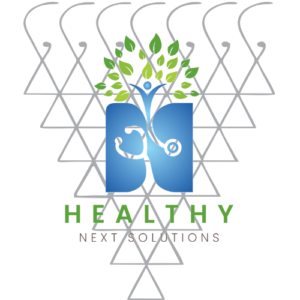
Introduction
Breastfeeding is one of the most natural and powerful ways to nourish a baby. It not only provides complete nutrition but also strengthens the emotional bond between mother and child. Breast milk is uniquely designed to meet a baby’s needs, supporting healthy growth and immunity in ways no formula can replicate.
Yet, for many new mothers, the journey can be filled with doubts, myths, and challenges. This comprehensive guide on breastfeeding explains everything you need to know — from its benefits and correct techniques to nutrition, common problems, and expert tips. Whether you’re preparing for motherhood or are already nursing, this guide is designed to make breastfeeding easier, more comfortable, and more rewarding.
Why Breastfeeding Matters: Benefits for Baby and Mother
Benefits for the Baby
Breast milk is often called “liquid gold” because it’s packed with essential nutrients, antibodies, and enzymes that help your baby thrive.
- Strengthens immunity and reduces the risk of infections such as diarrhea, colds, and ear infections.
- Decreases the risk of allergies, asthma, and eczema.
- Promotes healthy digestion and reduces constipation.
- Supports brain and eye development through omega-3 fatty acids like DHA.
- Lowers the risk of obesity, diabetes, and childhood cancers later in life.
- Provides emotional security through skin-to-skin bonding.
Benefits for the Mother
Breastfeeding benefits the mother just as much as it benefits the baby.
- Helps the uterus contract and return to its normal size faster after childbirth.
- Reduces postpartum bleeding and aids in natural weight loss.
- Lowers the risk of breast, ovarian, and endometrial cancers.
- Protects against type 2 diabetes and heart disease.
- Promotes relaxation by releasing oxytocin, helping reduce stress and anxiety.
- Saves money and time compared to formula feeding.
Global health organizations recommend exclusive breastfeeding for the first six months and continued breastfeeding alongside solid foods for at least two years.
Exclusive Breastfeeding: What It Means and How Long It Should Last
Exclusive breastfeeding means your baby receives only breast milk — no water, formula, or other liquids — for the first six months of life. Breast milk provides everything your baby needs during this period, including hydration.
After six months, you can introduce soft and safe complementary foods while continuing breastfeeding up to two years or longer. Some mothers choose to continue even beyond two years, which is completely normal and beneficial.
Every mother–baby pair is unique, and the most important thing is to find what works best for both while ensuring proper nutrition and emotional well-being.
Getting Started: The First Feed and Early Practices
Early Initiation
Breastfeeding should ideally begin within the first hour of birth — often called the “golden hour.” During this time, your baby is alert and instinctively ready to latch. Holding your baby skin-to-skin right after birth encourages natural reflexes and bonding.
Colostrum — The First Milk
In the first few days, your breasts produce colostrum, a thick yellowish fluid rich in antibodies, protein, and immune factors. This “first milk” acts like a baby’s first vaccine and provides powerful protection against infections.
Positioning and Latch
A good latch is the foundation of successful breastfeeding.
Key points for a proper latch:
- Your baby’s mouth should cover most of the areola, not just the nipple.
- Lips should be flanged outward, and chin should touch the breast.
- You shouldn’t feel sharp pain — only a gentle pulling sensation.
Common breastfeeding positions include the cradle hold, cross-cradle, football hold, and side-lying position. Try different ones to see what feels most comfortable for you and your baby.
Feeding Frequency and Duration
Newborns usually feed 8–12 times a day, about every 2–3 hours. Each session may last between 10 to 40 minutes. Feed your baby on demand, rather than on a strict schedule. Cluster feeding (frequent feeds for a few hours) is normal and helps build milk supply.
Signs Your Baby Is Getting Enough Milk
- At least 6–8 wet diapers per day after the first week.
- Steady weight gain after initial birth weight loss.
- Baby seems satisfied and sleeps well after feeding.
- You can hear or see rhythmic sucking and swallowing.
If you’re unsure about milk supply or baby’s feeding, consult your pediatrician or a lactation consultant.
Nutrition for Breastfeeding Mothers
Your diet directly impacts your energy, recovery, and milk production. You don’t need to eat perfectly, but aim for a balanced, nutritious diet that includes:
- Fresh fruits and vegetables
- Whole grains
- Lean proteins (chicken, fish, eggs, legumes)
- Healthy fats (nuts, seeds, avocado, olive oil)
- Plenty of water
Important Nutrients
- Calcium and Vitamin D: For bone strength.
- Iron: Prevents fatigue and anemia.
- Omega-3 (DHA): Supports baby’s brain development.
- Vitamin B12: Especially important for vegetarian mothers.
Limit caffeine and avoid alcohol or smoking. If you consume alcohol occasionally, wait at least two hours before feeding your baby.
Common Breastfeeding Problems and Solutions
Even experienced mothers can face difficulties. Here are some common issues and effective solutions:
1. Sore or Cracked Nipples
Cause: Poor latch or dry skin.
Solution: Re-check the latch, apply expressed milk or nipple cream, and keep nipples dry and clean.
2. Engorgement (Swollen Breasts)
Cause: Milk builds up if baby isn’t feeding often.
Solution: Feed frequently, apply warm compresses before feeding, and cold compresses afterward.
3. Blocked Ducts or Mastitis
Symptoms: Painful lump, redness, fever.
Solution: Keep feeding, massage gently toward the nipple, and consult your doctor if symptoms persist.
4. Low Milk Supply
Cause: Infrequent feeding, stress, dehydration, or hormonal imbalance.
Solution: Feed or pump often, stay hydrated, rest well, and practice skin-to-skin contact. Natural galactagogues like fenugreek or oats may help.
5. Overactive Let-Down
Cause: Fast milk flow leading to baby coughing or choking.
Solution: Try laid-back feeding positions and express some milk before feeding.
Pumping, Storing, and Bottle-Feeding Breast Milk
Pumping allows flexibility for working mothers or those who want to share feeding responsibilities.
Choosing a Pump
- Manual pumps: Affordable and portable.
- Electric pumps: Efficient and ideal for regular use.
Pumping Tips
- Pump at the same times your baby would normally feed.
- Use both breasts during sessions to maintain supply.
- Store milk in sterilized containers or breast milk storage bags.
Storage Guidelines
- Room temperature: Up to 4–6 hours.
- Refrigerator: 3–5 days.
- Freezer: Up to 6 months.
- Thawed milk: Use within 24 hours and never refreeze.
Always label milk with the date and time before storing.
Weaning and Introducing Solid Foods
Weaning usually starts around six months when your baby is ready for solids. Continue breastfeeding while introducing soft, iron-rich foods like mashed vegetables, fruits, and cereals.
Gradual weaning — replacing one breastfeeding session at a time — helps your baby adjust smoothly. There’s no fixed age to stop breastfeeding; it depends on your comfort and your baby’s readiness.
Myths and Facts About Breastfeeding
| Myth | Fact |
| Breastfeeding hurts. | It may be slightly uncomfortable initially, but pain usually means incorrect latch. |
| Formula is as good as breast milk. | Formula cannot replicate antibodies and enzymes found in breast milk. |
| You can’t breastfeed if you’re sick. | Most common illnesses don’t affect breastfeeding; consult your doctor. |
| Breastfeeding makes breasts sag. | Sagging is caused by pregnancy hormones and genetics, not breastfeeding. |
| You can’t work and breastfeed. | Pumping and stored milk make it possible to balance both. |
When to Seek Professional Help
Seek help from a lactation consultant or doctor if you experience:
- Severe pain or cracked nipples
- Poor baby weight gain
- Blocked ducts or mastitis
- Consistent low milk supply
- Baby refusing to latch
- Concerns about medications or special health conditions
Timely guidance can make your breastfeeding journey smoother and more enjoyable.
Self-Care and Emotional Well-Being
Breastfeeding can be demanding — both physically and emotionally. Remember:
- Stay hydrated and rest whenever possible.
- Share responsibilities with your partner and family.
- Practice relaxation techniques to reduce stress.
- Don’t compare your journey with others; every mother and baby are different.
- Join local or online breastfeeding support groups for encouragement.
Final Thoughts
Breastfeeding is a remarkable gift of love and nourishment that builds the foundation for lifelong health. It’s natural, sustainable, and emotionally fulfilling. However, it’s also a learned skill that takes patience and support.
Trust your instincts, seek help when needed, and take care of yourself along the way. Whether you breastfeed exclusively, pump, or combine both — every drop of breast milk counts and benefits your baby immensely.
References
- Cleveland Clinic – Benefits of Breastfeeding
- World Health Organization – Exclusive Breastfeeding Guidelines
- Baby Friendly USA – Importance of Breastfeeding
- Mayo Clinic – Nutrition Tips for Breastfeeding Mothers
- Scientific American – Breastfeeding Benefits for Mothers
- NCBI – The Surgeon General’s Call to Action to Support Breastfeeding



